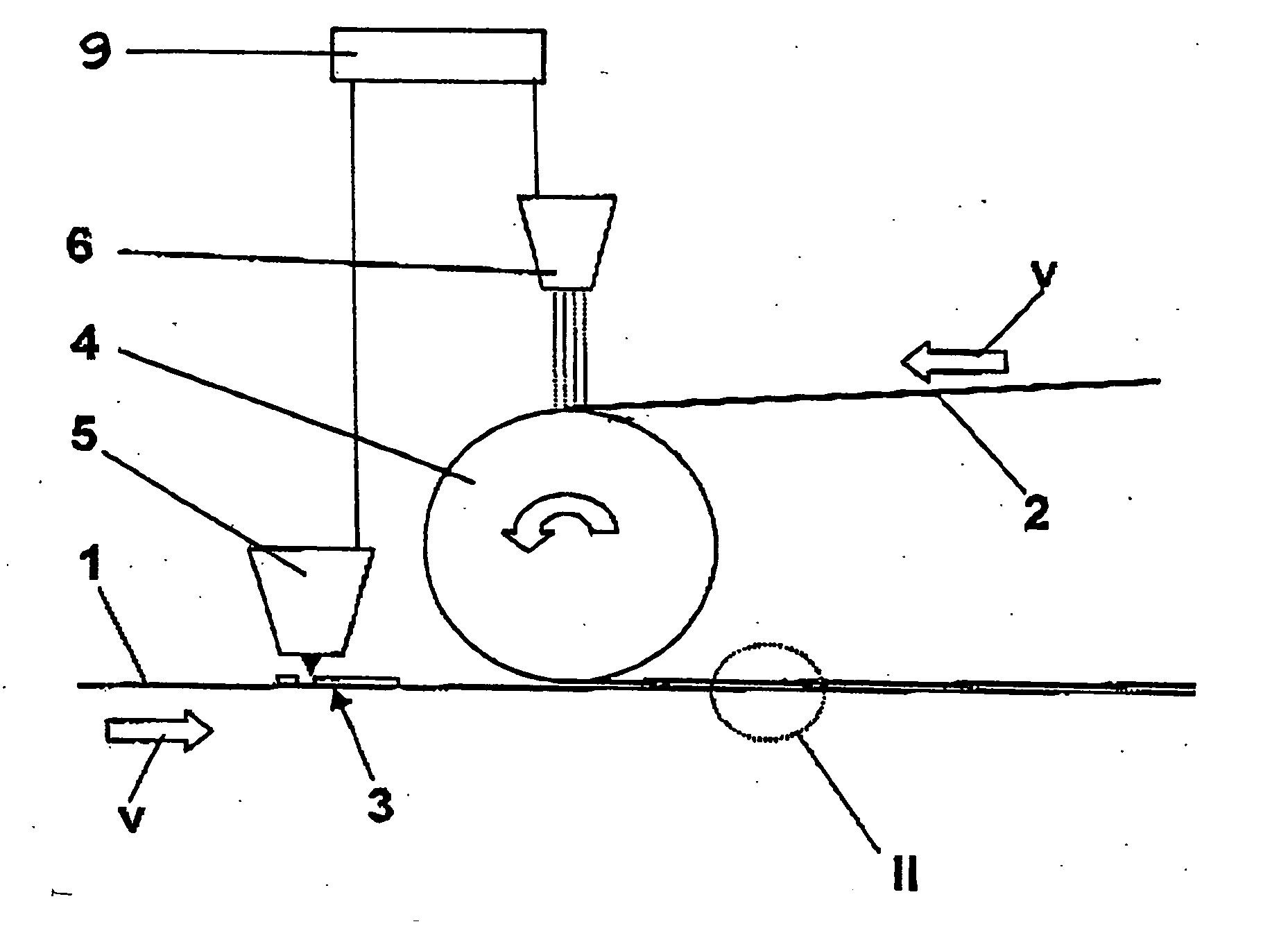Method of applying a cover layer to a structured base layer
- Summary
- Abstract
- Description
- Claims
- Application Information
AI Technical Summary
Benefits of technology
Problems solved by technology
Method used
Image
Examples
Embodiment Construction
[0035]FIG. 1 shows a method of applying a cover layer 1 to a base layer 2, which is provided with a structuring 3 comprised of printed conductors, for example. The base layer 2 is moving at a feed rate v in continuous operation. By means of a guide 4, which is designed as a rotatable body, the cover layer 1 is brought to the matching feed rate v and is applied to the base layer 2. The position of the structuring 3 on base layer 2 is determined directly by a non-contact sensor 5 and transmitted to a control unit 9. The control unit uses this information to trigger a control signal for a laser 6 which ablates the cover layer 1 to form a recess in precise position to receive the structure 3 when the cover layer 1 is applied to the base layer 2. Thus, depending on the position of the structuring 3, a recess 7 (shown in FIG. 2) is created by the laser 6 in the cover layer 1 and is made to coincide with the structuring 3.
[0036]FIG. 2 shows an enlarged diagram with the base layer 2 with t...
PUM
| Property | Measurement | Unit |
|---|---|---|
| Pressure | aaaaa | aaaaa |
| Feed rate | aaaaa | aaaaa |
| Shape | aaaaa | aaaaa |
Abstract
Description
Claims
Application Information
 Login to View More
Login to View More - R&D
- Intellectual Property
- Life Sciences
- Materials
- Tech Scout
- Unparalleled Data Quality
- Higher Quality Content
- 60% Fewer Hallucinations
Browse by: Latest US Patents, China's latest patents, Technical Efficacy Thesaurus, Application Domain, Technology Topic, Popular Technical Reports.
© 2025 PatSnap. All rights reserved.Legal|Privacy policy|Modern Slavery Act Transparency Statement|Sitemap|About US| Contact US: help@patsnap.com


